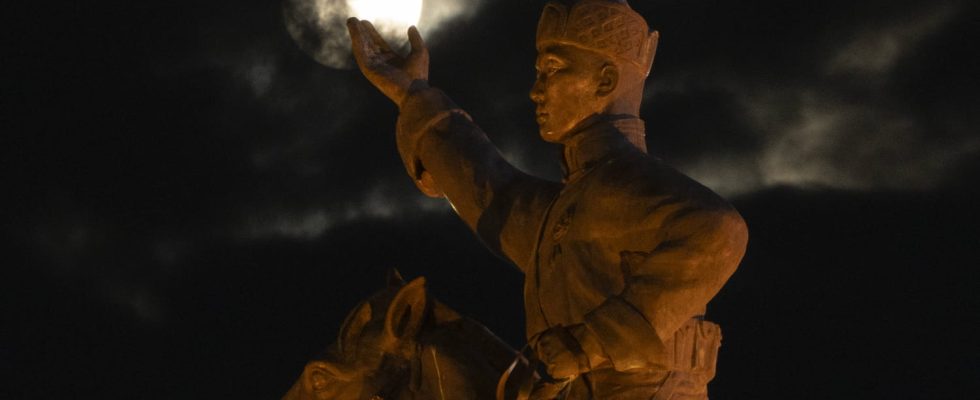SUPER MOON. This night of Thursday August 31, 2023, a rare phenomenon could be photographed in the night sky around the world: a super blue moon.
[Mis à jour le 31 août 2023 à 7h00] A rare phenomenon occurred that night of Thursday August 31: the “super moon blue”, a term that has nothing to do with its color. It was the thirteenth full moon of the year and the last of the summer, when only twelve should form in a usual year. The astronomy site Starwalk announced that it was “the largest and brightest full moon this year. It was actually even more red than blue due to its particularly low position in the sky. most beautiful Pictures taken around the world:
A blue moon is not a blue colored moon, but means that in the same month two full moons appear. Indeed, this year 2023, a first full moon appeared on August 1, and a second, this Thursday August 31. There is usually only one full moon in a month, the lunar cycle being 28 days. Exceptionally, the year 2023 has 13 moons instead of 12. As a general rule, only one Blue Moon is seen every 2.7 years. Except that on the night of August 31, this blue moon phenomenon was added to that of a super moon… An event that does not happen again before January 2037. “About 25% of full moons are super moons, but only 3 % of full moons are blue moons” says NASA. For astrologers, a blue moon signifies change or revolution:
Every two to three years, the year includes 13 full moons instead of 12. The super blue moon is therefore associated with the number 13. Beliefs from the Middle Ages associate these years with 13 full moons with natural disasters, but gardeners evoke rather particularly rainy years not conducive to harvests.
In astronomy, this event is called “perigee-syzygia”, the name of Super Moon having nothing scientific, since it is an invention of the astrologer Richard Nolle in 1979. “A Super moon occurs when the full moon coincides with when the Moon comes closest to Earth in its elliptical orbit, a point called perigee,” explains the NASA website. By Super Moon, we therefore mean a celestial phenomenon that is due to two elements: the only satellite of planet Earth passes closest to us when it is a full moon evening.
The Super Moon is not really observable until after sunset. sun, with the naked eye, using binoculars or telescopes. In order to observe a Super Moon in optimal conditions, it is necessary to equip yourself with astronomical glasses or a telescope, far from atmospheric pollution, or go to one of the clubs of the French Association of Astronomy (AFA). See the map.
A Super Moon appears slightly brighter and larger than a Full Moon, simply because it appears at perigee, at its closest orbit point to Earth, less than 360,000 km away.
Due to the proximity of the full moon to our planet Earth, its effects have an even stronger impact on tides, mood and sleep. Indeed, as explained by a Swiss scientific study carried out in 2013 published in the journal Current Biology, “a lunar rhythm can modulate the structure of sleep in humans”. This means that the time to fall asleep is extended by 5 minutes, deep sleep reduced by 30% and sleep duration by 20 minutes. Consequently, the level of melatonin, a hormone secreted during our sleep, which has a role to play in mood, is lower, which can cause irritability or even depression.
| DATE | HOUR | DISTANCE FROM EARTH |
| Thursday August 31 | 3h35 | 357,344 km |
| Friday, September 29 | 11:57 | 361,552 km |
